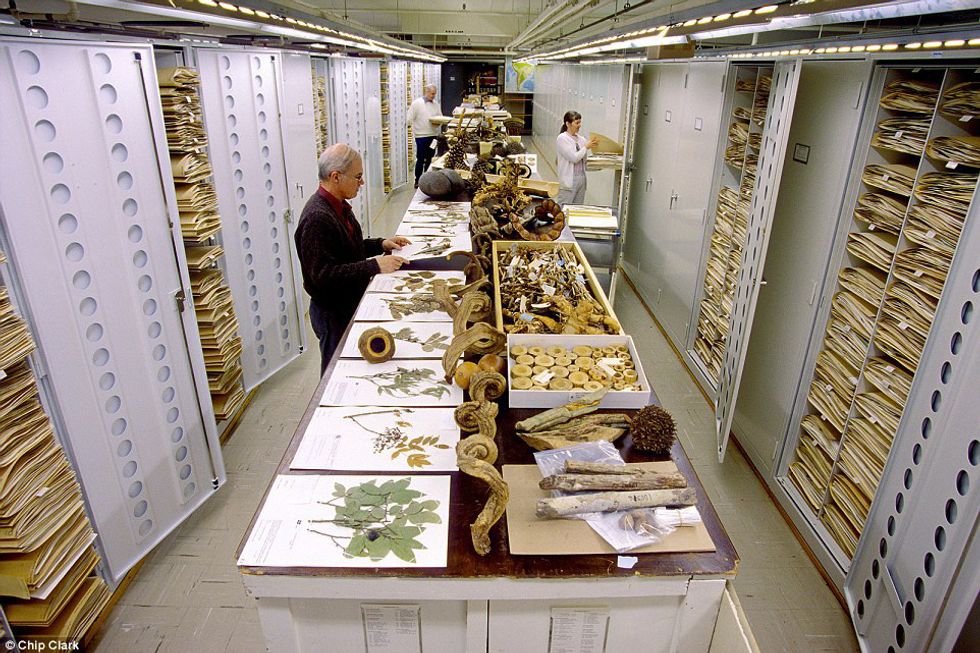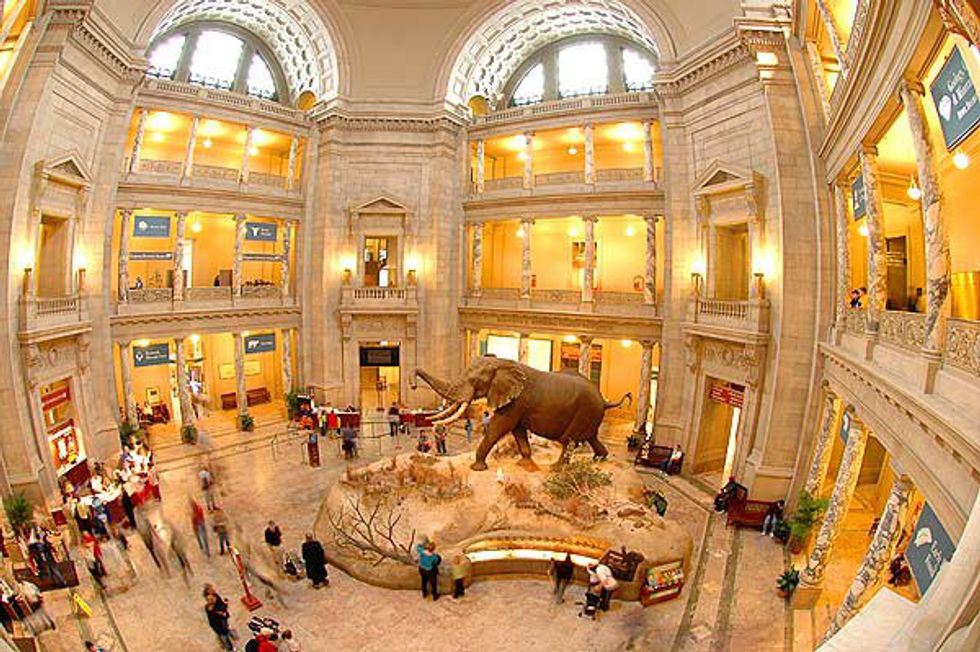Museum directors, such as Dr. Kirk Johnson, Sant Director of the Smithsonian National Museum of Natural History, are looking for ways to bring the idea of museums into the twenty-first century, but how? They're not quite sure, but they're looking for answers from all of us.
Museums around the world are holding about 4.2 billion objects from history, preserving cultures and looking answers not only about the world's past, but it's future. The only problem is making this information accessible to the population as a whole. When you walk into a museum, even one as large as the Smithsonian in Washington D.C., you are only looking at the "tip of the iceberg" according to Dr. Johnson. It's started with art museums, with hundreds of pieces available on a website, but with science based museums the samples are much more numerous. There are thousands of samples that researchers are using on Smithsonian sites that the public doesn't realize is there because it can not all go on display.
The seemingly simple solution is to digitize the information to have it available, like so much is, on the internet or at least on devices inside the museum for visitors to explore in depth at their own pace in able to do individual learning and perhaps even form their own ideas and conclusions about the data given. But how do you upload billions of objects into a data base- how do you catalog all of these objects quickly enough to use the information when it's needed- now, or at least within the next 15 years?
The first step is to connect with other repositories of history, such as the top 12 largest museums in the world. This group has been working to unify formatting of collections, ways to present data, and most importantly brainstorming ways to bring their museums out of the 19th century, into the 21st, and to be prepared for the 22nd, as a new generation of eager children come to the museums. The idea is to bring everything to terms with technology being developed today.
With a little more development, virtual reality can majorly come into play, making it possible to make a lecture hall full of museum goers where they can experience not only a few diagrams, but the collection as a whole, or more of it in any case. You could be transported back in time so that the seat you were sitting in is covered with water, and you can see prehistoric marine life, or the ice caps at full size at the height of the ice age, or you can see the world during greenhouse earth about 35 million years ago when there were no polar ice caps at all, or even the extreme 50 million years ago when the climate of present day Louisiana could be found in the area that is now northern Greenland.
Some feel they have taken the first step with a cinema, but the Smithsonian will actually be getting rid of their cinema because they are "chasing a different fish," as Dr. Johnson explains. The dioramas as of now are very important to their visitors, as they have an emotional attachment to them, and as of now it is the most realistic way to show animals and cultures from history. Nothing is better than visiting actual sites like the grand canyon and seeing the history beneath your feet, but not everyone can get there, so museums are the closest substitute, as well as a center for research to be centralized. However, if technology can be used to bring this history to life, it will be the future of learning, and this is the idea they are chasing. The problem- the dollar barrier. It's a valid question, without an easy answer. As of now, how can the museums strategically and quickly integrate technology and digitize their collection? The answer may be with us.
Imagine watching this huge elephant walking before your eyes at a local museum. As gaming and animation develops, it is becoming easier to portray realistic images and model them digitally. Students now may find a job at such a museum, bringing all of their collections into a format available to the public as a whole, and that will be just the beginning. The virtual reality room may become reality, with new innovations such as the virtual reality theme park called the Void, made by a company based in Salt Lake City, Utah, virtual reality goggles used with Samsung phones that helped sports fans view the Olympic games in Rio. It's all about using all of the resources around us and collaborating between fields. This may be a future intersection of artists and science- instead of artists helping to make sculptures of mammoths from the findings of excavators, scientists working with their genes, etc., animators and video game designers will work with the sculptors, scientists, museum curators, computer programmers, and more to create a museum experience unparalleled by any museum we have today.
Do you think you'll contribute to the revolutionizing of the museum? What do you see happening in the future?
To see what the Smithsonian has to offer today, check out their website: http://naturalhistory.si.edu/























